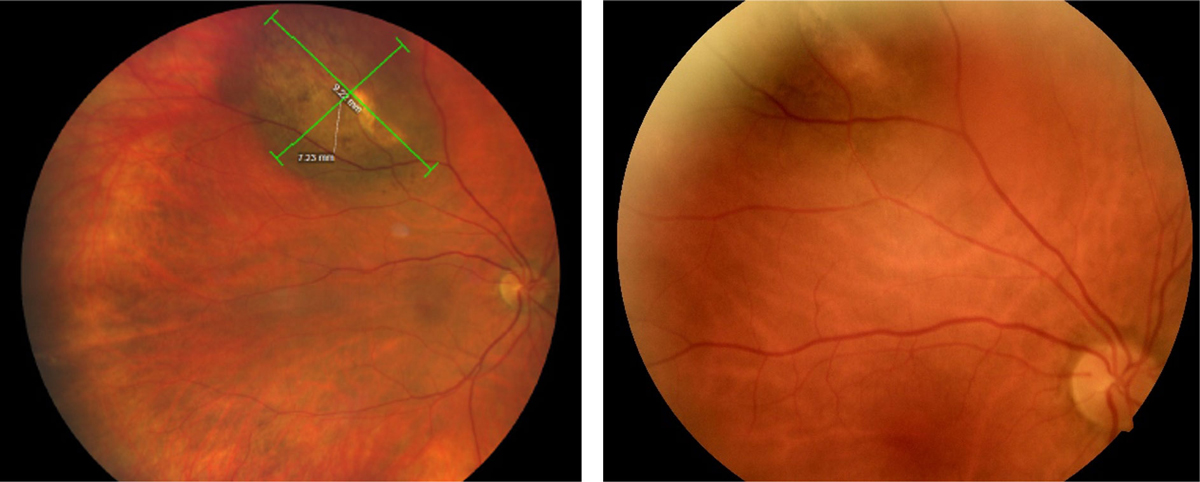 |
This study identified ciliary body involvement, male sex, patient age at diagnosis, tumor diameter and monosomy 3 as independent prognostic factors for metastasis. Photo: Amy Bade, OD. Click image to enlarge. |
Researchers recently proposed a new prognostic classification for uveal melanoma that combines the American Joint Committee on Cancer’s (AJCC) and the Cancer Genome Atlas’s (TCGA) models. They reported that this new classification system “demonstrated greater prognostic acumen than both AJCC 4 T categories and TCGA groups A to D in validation cohorts.”
To create the new classification system, the researchers examined the independent importance of ciliary body involvement (CBI), monosomy 3 (M3), tumor size and histological and clinical factors using two cohorts (n=1,796). The classification system was trained and validated in two independent cohorts.
The researchers reported that tumors with CBI were more common in women. These tumors also had greater apical thickness, basal tumor diameter, vasculogenic mimicry rate and M3 rate. They were also more often asymptomatic at diagnosis but had poorer five- and 10-year globe conservation rates.
Patient age at diagnosis, tumor diameter and CBI were independent predictors of M3, based on multivariate logistic regression. Independent predictors of metastasis included male sex, age at diagnosis, tumor diameter, M3 and CBI.
The researchers’ proposed prognostic criteria included patient age, sex, CBI, extraocular extension, M3, 8q (optional) and tumor size. They noted that “tumor size doesn’t confound the prognostic implications of CBI, M3, male sex and age at diagnosis in uveal melanoma.”
“Primary uveal melanomas with CBI are associated with many poor prognostic factors,” the researchers concluded. Along with CBI, male sex, patient age at diagnosis, tumor diameter and M3 are independent prognostic predictors for metastasis. A prognostic classification system that combines patient sex, age, AJCC 4 T categories and TCGA groups A to D is advantageous.”
Gill VT, Sabazade S, Herrspiegel C, et al. A prognostic classification system for uveal melanoma based on a combination of patient age and sex, the American Joint Committee on Cancer and the Cancer Genome Atlas models. Acta Ophthalmologica. 2022;00:1-15. |


